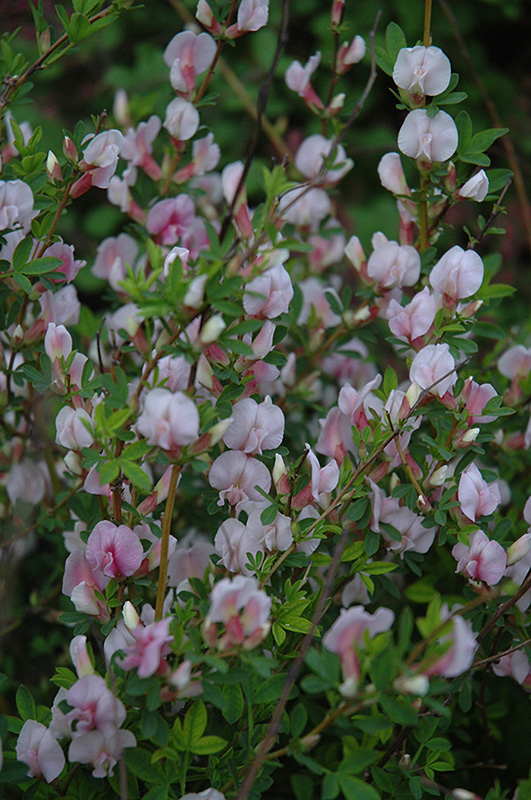Height: 12 inches Spread: 3 feet
Sunlight:
Hardiness Zone: 3b Description: A functional yet quite attractive low shrub when in bloom, with spreading branches smothered in purplish-pink flowers in late spring; somewhat diminutive the rest of the year but not unattractive; extremely tough and durable, makes a great groundcover Ornamental Features Purple Broom is smothered in stunning purple pea-like flowers with pink overtones along the branches in late spring. It has bluish-green deciduous foliage. The small compound leaves do not develop any appreciable fall colour. The lime green stems can be quite attractive. Landscape Attributes Purple Broom is an open multi-stemmed deciduous shrub with a ground-hugging habit of growth. Its relatively fine texture sets it apart from other landscape plants with less refined foliage. This is a high maintenance shrub that will require regular care and upkeep, and should only be pruned after flowering to avoid removing any of the current season's flowers. It has no significant negative characteristics. Purple Broom is recommended for the following landscape applications; Planting & Growing Purple Broom will grow to be about 12 inches tall at maturity, with a spread of 3 feet. It tends to fill out right to the ground and therefore doesn't necessarily require facer plants in front. It grows at a medium rate, and under ideal conditions can be expected to live for approximately 20 years. This shrub should only be grown in full sunlight. It prefers dry to average moisture levels with very well-drained soil, and will often die in standing water. It is considered to be drought-tolerant, and thus makes an ideal choice for a low-water garden or xeriscape application. It is particular about its soil conditions, with a strong preference for clay, alkaline soils, and is able to handle environmental salt. It is highly tolerant of urban pollution and will even thrive in inner city environments. This species is not originally from North America.![]()
![]()
![]()
![]()
![]()
![]()
![]()
![]()
![]()
![]()
![]()
![]()
![]()


